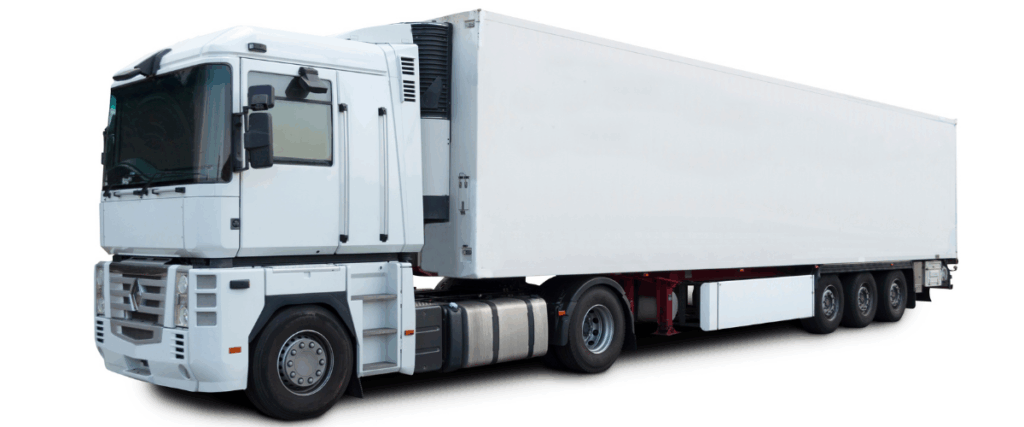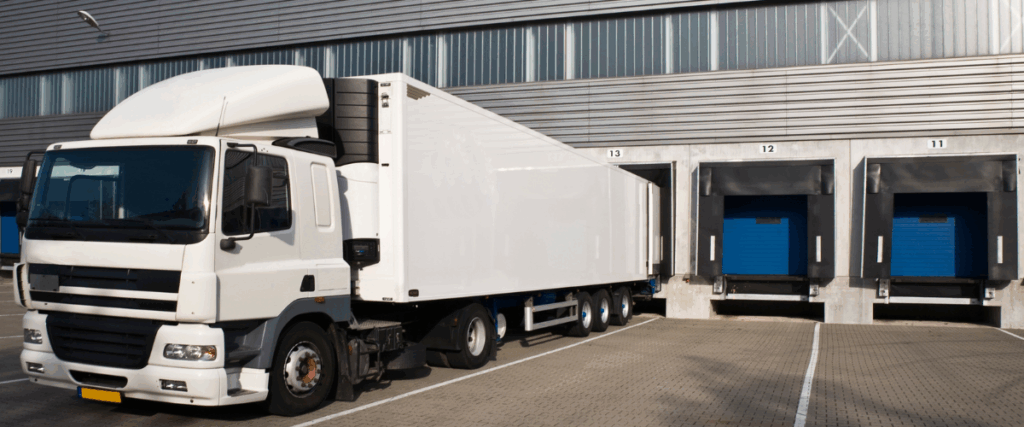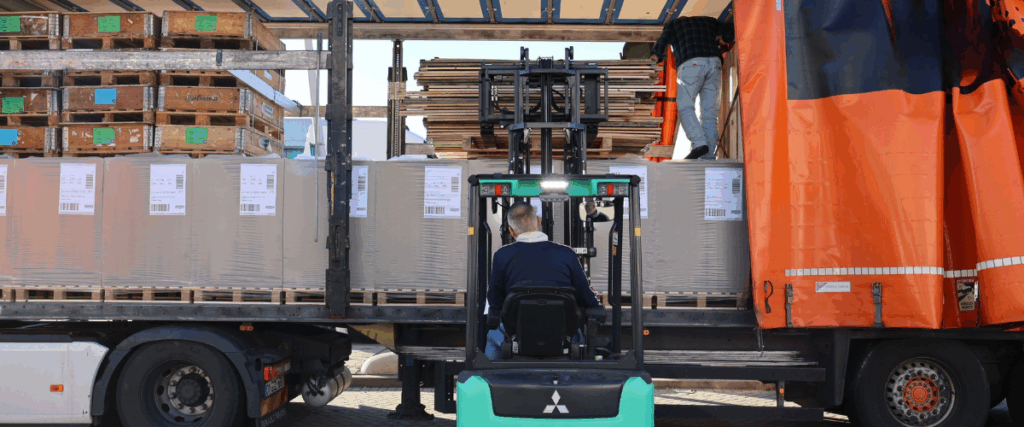In today’s global supply chain, moving perishables from the Netherlands or Belgium to Spain demands precision, reliability, and the right equipment. A frigo truck to Spain offers the optimal solution for freight that must stay cool or frozen, but there’s much more to it than just a refrigerated trailer. Below is everything you need to know when choosing a frigo-truck service for when you need to ship to Spain.

Types of Loads
- Fresh produce such as oranges, tomatoes, peppers, and stone fruit.
- Goods that require constant low temperatures such as dairy, meat, chilled fish
- Pharmaceuticals or high-value perishables
- Non-temperature critical loads: in some cases, a frigo truck may carry non-chilled goods (see section on tautliner usage below).
Types of trucks / trailers (incl. temperatures)
- Refrigerated trailer (reefer): built with an insulated body plus a cooling unit between -25°C and +25°C, ideal for frozen (-18°C) or chilled (+2°C to +7°C) cargo.
- Isothermal vehicle: insulated but not actively cooled, can usually maintain temperature differences of up to ±10°C, suitable for short-distance chilled transport.
- Curtain-sided (tautliner) trailer: standard non-refrigerated equipment; carries goods that do not need temperature control but can occasionally be used to transport ambient goods.
Pricing Compared to Other Trucks
When you choose to transport using a frigo truck to Spain, expect higher costs because:
- The refrigeration unit adds fuel, maintenance, and capital cost.
- Handling perishables demands tighter schedules and special procedures.
- Because of seasonality and imbalances, pricing fluctuate significantly.
Tip: If you have chilled goods but not strict temperature-critical ones, ask whether you can book a frigo trailer and run it at a higher set-point or use a tautliner to save costs.

The Set-Up Process
- Temperature preparation: Your goods should be cooled or frozen before loading, and the truck will already be set to the right temperature.
- Loading phase: Your cargo is quickly loaded in a temperature-controlled environment to prevent exposure to warm air.
- In-transit control: The truck’s refrigeration unit maintains a constant temperature, with drivers and dispatchers monitoring it through sensors and GPS systems.
- Route management: Carriers then plan routes and timing to ensure delivery happens without unnecessary stops or delays that could affect the temperature.
- Delivery: Upon arrival, unloading happens promptly so that the goods stay within the temperature range.
Seasonality Warning
The market for frigo-truck services to Spain is heavily influenced by the produce harvest, export volumes, and trade-flow imbalances.
- Spain exported over 10 million tons of fresh fruits and vegetables by truck in 2023.
- High season for fruits & vegetables begins in October or November.
- During summer months, there is less outbound frigo-traffic from Spain because harvests have ended or volumes are lower.
This means:
- Frigo truck capacity may drop, causing higher costs or lower availability.
- When demand is low, providers may run frigo trailers as tautliners or offer lower rates to fill capacity.

Using Frigo Trailers as Tautliners When Scarce
Many logistics providers use frigo trailers as tautliners in certain seasons when cooling isn’t required.
- You may get the benefits of a high-spec frigo truck but pay a tautliner rate if cooling is turned off or set-point is ambient.
- In quieter seasons, these equipment substitutions can reduce costs.
However, if your goods require strict temperature control, always keep the refrigeration unit active.
Request a Frigo truck to Spain with Portex
If you’re looking for a reliable solution to transport with a frigo truck to Spain from the Netherlands, we’re here to help. Whether you need a full truckload (FTL) or prefer groupage (LTL), Portex offers fast, flexible, and cost-effective road freight options tailored to your needs.
Contact our team today to get started – we’ll ensure your goods reach Spain efficiently and securely.

FAQs
| How long does transport take with a frigo truck to Spain? Transit time from the Netherlands or Belgium to Spain takes 2 to 5 days, depending on the delivery region. |
| Is a frigo truck more expensive than a standard tautliner? Yes. Refrigerated transport has higher operational costs due to cooling fuel, equipment maintenance, and strict handling procedures. Prices also vary with seasonality and demand. |
| Do my goods need to be pre-cooled before loading? Yes. Products must be pre-cooled or pre-frozen before loading. A frigo truck is designed to maintain temperature, not to cool warm cargo down. |
| Can a frigo truck operate as FTL and LTL? Yes. A frigo truck can run as FTL (very common) or LTL (possible but less frequent). All LTL shipments must require the same temperature, which limits availability of mixed loads. |
| What temperature ranges can a frigo truck maintain? Frigo trucks can maintain temperatures from –25°C to +25°C. Typical settings include: Frozen: –18°C Chilled food: +2°C to +7°C Pharma: +15°C to +25°C |
